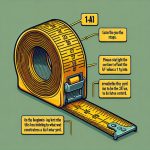Funny enough, I was just rummaging through my sewing kit when I realized how important understanding fabric weight is, especially for someone who dabbles in sewing projects like myself.
In the US, we measure fabric weight in ounces per square yard, but elsewhere, it's in grams per square meter. This measurement isn't just a number; it gives us insights into the fabric's density, thickness, and ultimately, its suitability for different sewing projects.
But how exactly do we measure this weight, and why should we care? Stick around, and I'll share some insights that might just make your next project a bit smoother.
Table of Contents
Key Takeaways
- Fabric weight is measured in grams per square meter (GSM) or ounces per square yard (oz/yd²).
- Different materials and fiber contents result in varying fabric weights.
- Converting between GSM and oz/yd² involves simple mathematical formulas.
- Accurate fabric weight measurement is crucial for garment construction and fabric selection.
Understanding Fabric Weight
Understanding fabric weight is essential as it directly influences a fabric's drape, opacity, and durability, guiding us in selecting the perfect material for our projects. Fabric weight is typically measured in grams per square meter (g/m²) or ounces per square yard (oz/yd²), providing a standard to compare different fabrics. Knowing this helps immensely when I'm trying to match fabrics to sewing patterns or making informed choices for online fabric purchases.
Different materials naturally have varying weights; for instance, silk is on the lighter end of the spectrum, while synthetic fibers, like polyester, tend to be heavier. This variation is important because the weight of a fabric affects how it hangs and feels once made into a garment. Light, medium, and heavy weights each offer distinct characteristics, making them suitable for different types of projects. For example, a lightweight fabric might be perfect for a breezy summer dress, whereas a heavier fabric could be ideal for a structured jacket.
Understanding fabric weight also involves considering the fiber content since this can affect the overall feel and performance of the fabric. This knowledge is key to selecting the right fabric for the look and functionality I'm aiming for in my projects.
Importance of Fabric Weight
Recognizing the importance of fabric weight is essential, as it greatly affects a garment's construction, fit, and overall appearance. When I'm selecting materials for my projects, understanding fabric weight guarantees I choose the right fabric for the job, whether it's a flowy summer blouse or a structured winter coat. The weight of the fabric can greatly influence the garment's drape, durability, and opacity, which are key elements in achieving the desired outcome.
Different fabric weights, from light cotton voiles to heavy wool tweeds, offer distinct characteristics suited to various garment types. This variability highlights the need for precise fabric selection to meet specific project requirements. The fiber content and weave type also play pivotal roles in determining fabric weight, further impacting the look and feel of the finished piece.
Common Measurement Units
How do we accurately measure fabric weight, and why is it important for our projects? Understanding the common measurement units, such as GSM and oz/yd², is essential. GSM, or grams per square meter, is the globally prevalent unit for fabric weight. It's what you'll often use when communicating with suppliers or comparing fabrics internationally. On the other hand, oz/yd², or ounces per square yard, is frequently used in the UK and is just as important for those of us working within or with markets that prefer this measurement.
Knowing these units allows for accurate fabric selection and garment design, impacting our overall fabric usage. Whether I'm sourcing materials for a lightweight summer dress or a sturdy winter coat, being fluent in these measurement units ensures I'm on the same page as my suppliers. It's not just about the numbers; it's about understanding the feel and behavior of the fabric in various weights.
Conversions between GSM, oz/yd², and other units like g/y can seem challenging, but they're manageable with specific formulas and online converters. This knowledge is important for industry standardization and makes sure that I'm making informed decisions based on accurate measurements.
Conversion Formulas Explained
Let's delve into the math behind converting fabric weights, making sure we're all speaking the same language when it comes to GSM and oz/yd². Understanding these conversions is key in the textile industry, where precision can make or break the quality and international standardization of fabrics.
GSM, or grams per square meter, is a metric measurement of fabric weight, while oz/yd², ounces per square yard, follows the imperial system. To switch from GSM to oz/yd², you divide the GSM number by 33.906. It's a simple formula that bridges the gap between these two common units, ensuring accuracy in communication and documentation across global markets.
Conversely, if you're working with oz/yd² and need to convert to GSM, you do the reverse by multiplying the number of oz/yd² by 33.906. This conversion ensures that no matter where you're or what system you're more comfortable with, you can accurately understand and relay fabric weight.
Grasping these conversion formulas empowers us to maintain consistency in fabric measurement, a cornerstone of quality control and international standardization in the textile industry. It's not just about numbers; it's about ensuring that everyone, everywhere, can accurately compare, produce, and trade fabrics with confidence.
Measuring Fabric Weight
When measuring fabric weight, it's important to grasp that this metric directly impacts the fabric's density, thickness, and overall suitability for various sewing projects. Knowing whether a fabric is lightweight or heavyweight helps me decide if it's right for a breezy summer dress or a sturdy winter jacket. I've learned that fabric weight is commonly measured in grams per square meter (GSM) or ounces per square yard. These units give me a clear picture of how heavy or light a fabric is, which directly correlates to its density and thickness.
Understanding the conversion between GSM and ounces per square yard has been critical for me, especially when I'm looking at fabrics from different parts of the world. This knowledge allows me to compare fabric weights accurately, ensuring I choose the right material for my projects.
Fabric weight significantly affects a fabric's characteristics, including its drape, opacity, and how well it's suited for different garment types. Mastering the measurement of fabric weight means I can select fabrics with confidence, knowing they'll meet the specific needs of my sewing projects and lead to consistent results in my creations.
Challenges and Solutions
Handling the challenges of fabric weight discrepancies demands a keen eye and reliable resources to make certain the materials meet project specifications. Knowing that the weight of the fabric can vary up to 30% from the declared weight, it's important to tackle these issues head-on. Here's how I guarantee accurate fabric weight for my sewing projects:
- Verify with Vendors: I always double-check fabric weight information with vendors, especially when purchasing fabric online. Sartor, for instance, guarantees the accuracy of their fabric weight, offering peace of mind.
- Use Trusted Resources: To accurately determine fabric weight, I rely on trustworthy sources that detail measurements per square meter, ensuring the data I use is reliable.
- Personal Verification: Whenever possible, I measure the fabric myself, particularly for those with varying widths, to confirm the fabric meets the required specifications for my projects.
- Allow for Variance: Understanding that there might be up to a 30% discrepancy, I plan my purchases with some flexibility in mind, ensuring my projects can adapt to slight variations in fabric weight.
Interpreting Weight Data
Understanding fabric weight data is important for selecting the right materials for your sewing projects, especially since this information is often presented in different units like grams per square meter (GSM) or ounces per square yard (oz/yd²). Knowing the difference between these units and how to convert them is essential. For instance, if I find a fabric measured in ounces but I'm more familiar with GSM, I simply multiply the ounces by 33.906 to switch to metric. It's a handy trick that guarantees I'm always on top of my material choices.
Different materials vary in weight, affecting the drape and feel of the final product. Silk, for instance, is on the lighter end of the spectrum. Interestingly, silk has its unique unit of measure, momme, which adds another layer to interpreting fabric weight data. Understanding these nuances allows me to make informed decisions about fabric suitability based on its weight, ensuring the success of my sewing projects.
Frequently Asked Questions
How Is Fabric Weight Calculated?
I calculate fabric weight by measuring its mass and then converting it into grams per square meter (gsm) or ounces per square yard, using the formula: weight (g) / (length (m) x width (m)).
What Does 5 Oz Cotton Mean?
When I say 5 oz cotton, I'm talking about a cotton fabric that's got a weight of 5 ounces for every square yard. This makes it a midweight fabric, perfect for many sewing projects.
Is 8 Oz of Fabric Heavy?
I'd say 8 oz of fabric isn't heavy. It's considered midweight, perfect for jackets or pants. This weight balances durability with a good drape, making it versatile for various clothing projects. It's substantial without being overly heavy.
Is 10 Oz Fabric Heavy?
Yes, I'd consider 10 oz fabric heavy. It's perfect for durable items like non-stretch jeans or structured pants. This weight offers great structure and longevity, making it ideal for sturdy garments or winter coats.
- Tetron Fabric for Marine Applications: Durability and Use Cases - June 18, 2025
- Tetron Fabric for Outdoor Furniture: Weather Resistance and Care - June 18, 2025
- Tetron Fabric for Wall Coverings: Style and Application Tips - June 18, 2025





